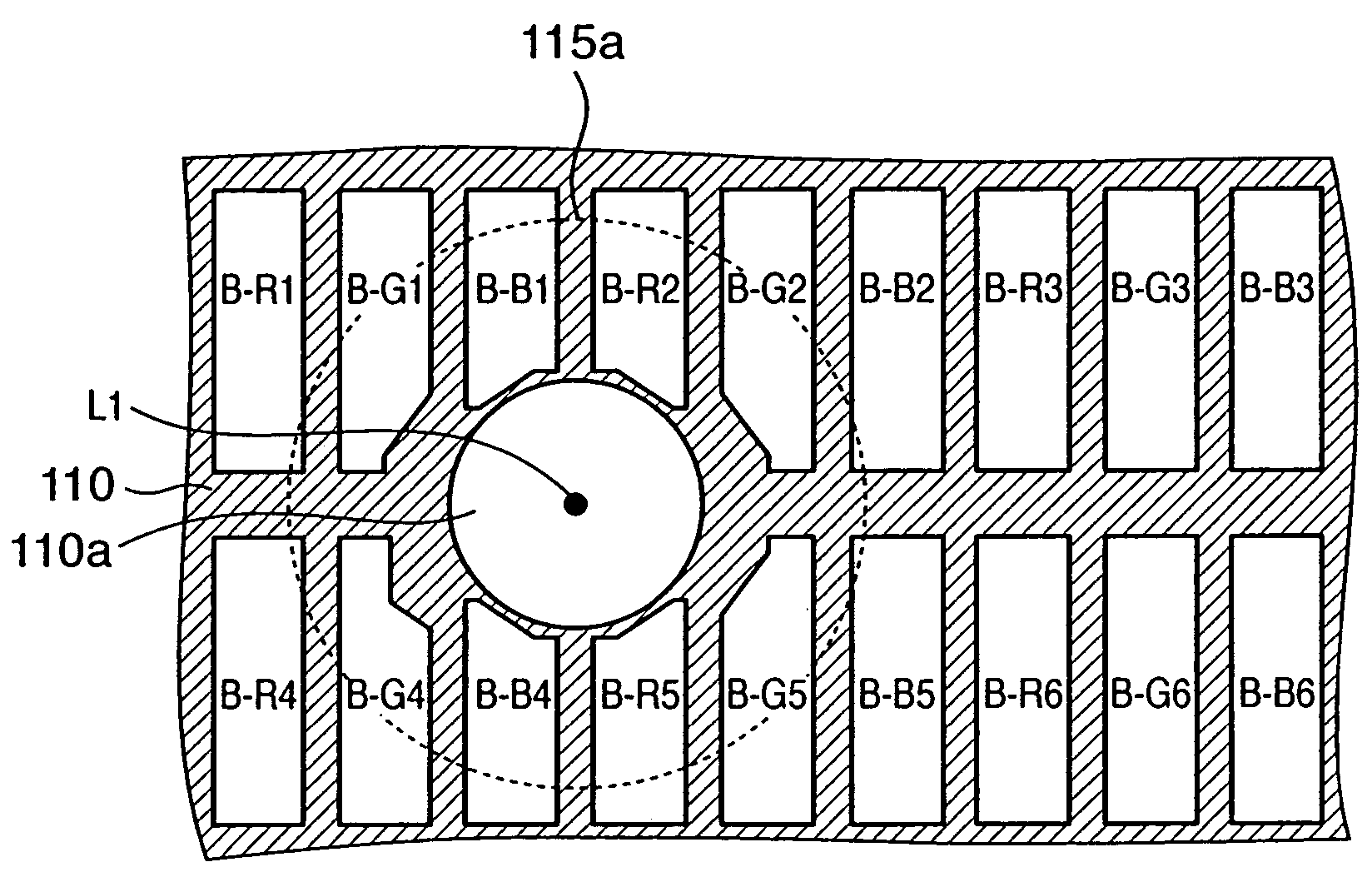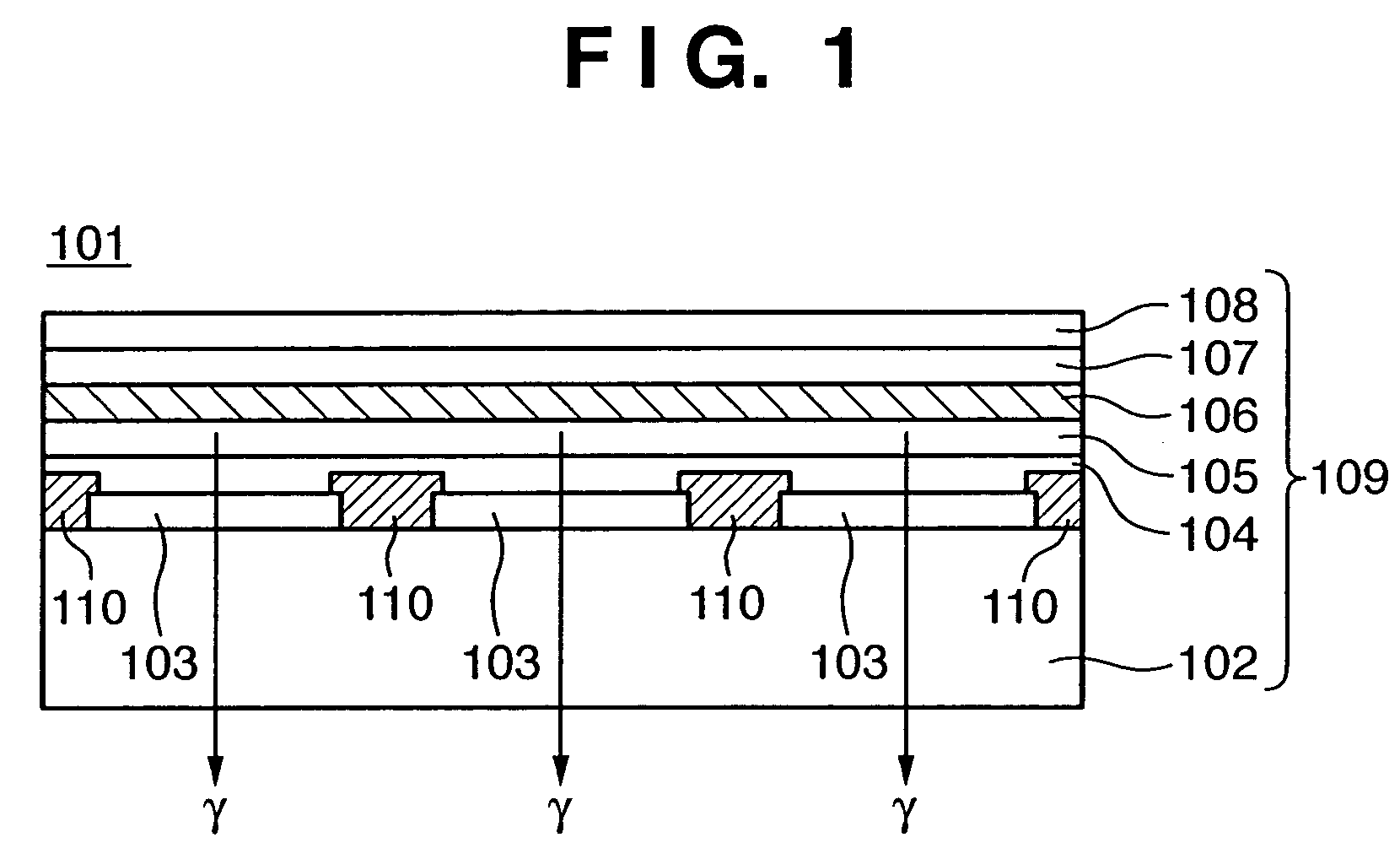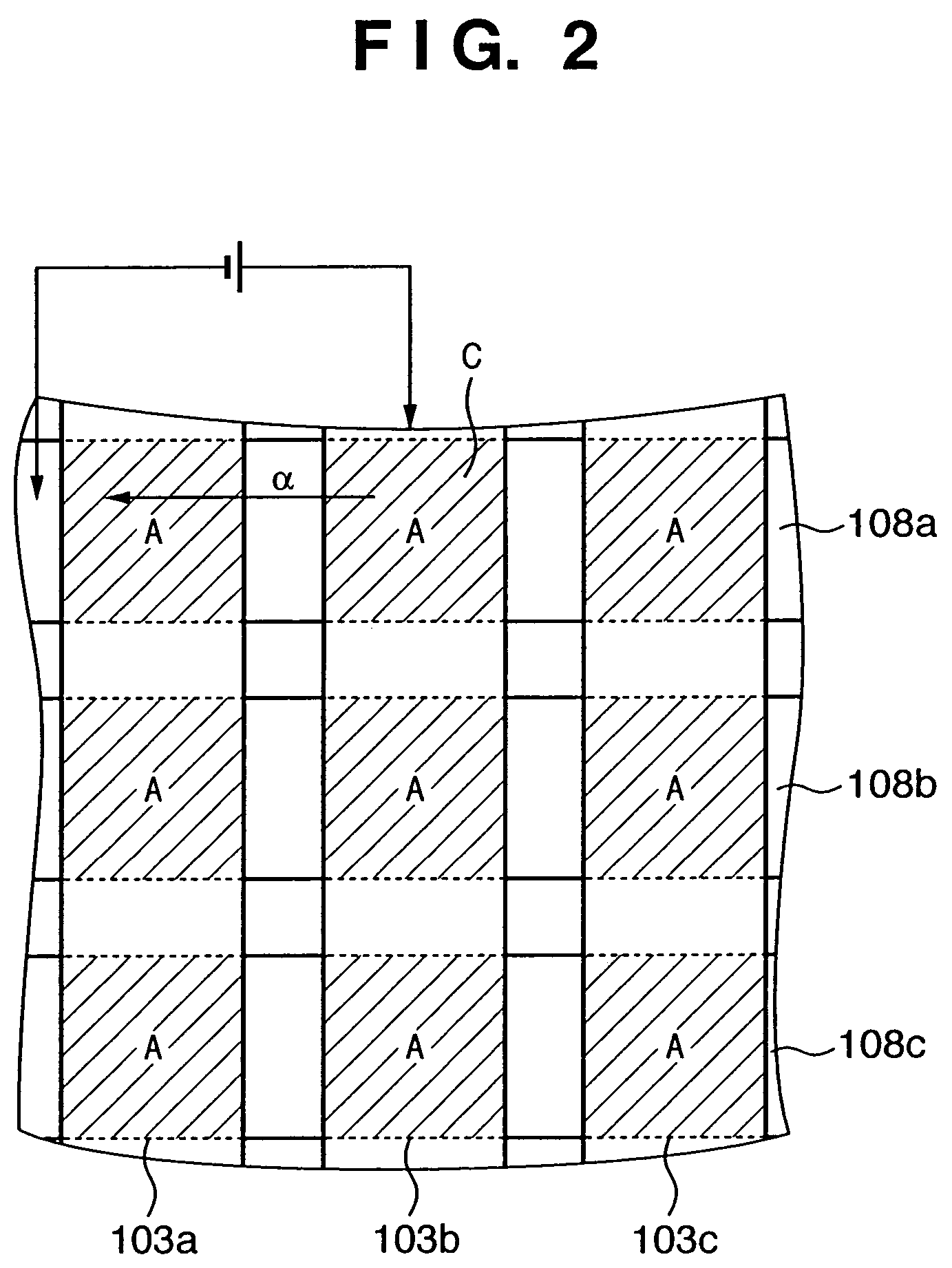Display device with image sensing device
a technology of image sensing and display device, which is applied in the direction of radiation control device, printer, identification means, etc., can solve the problems of high manufacturing cost, awkwardness, and odd feeling, and achieve the effects of low cost, simple arrangement, and high pixel density
- Summary
- Abstract
- Description
- Claims
- Application Information
AI Technical Summary
Benefits of technology
Problems solved by technology
Method used
Image
Examples
first embodiment
[0058]The first embodiment is an example using an organic EL (EL: Electro Luminescence) element as display means. The organic EL element is a self-emission element, and has excellent features: (1) high light-emitting efficiency; (2) a low driving voltage; (3) various colors (green, red, blue, yellow, and the like) can be displayed by selecting light-emitting materials; (4) no backlight is required; (5) no dependence on the field angle due to surface emission; (6) low-profile and lightweight; and so forth, when it is used in a display device. Hence, a display device using an organic EL element has received a lot of attention as a display device that replaces a CRT and LCD. Prior to a description of this embodiment, an organic EL display device will be explained.
[0059]Dot-matrix organic EL display devices which make display by means of dots arranged in a matrix are classified into a simple matrix system and active matrix system.
[0060]The simple matrix system externally and directly dr...
second embodiment
[0135]The second embodiment is a modification of the first embodiment. In this embodiment, display pixels are arranged at higher density to improve the display resolution, and even when the opening ratio of each display pixel is increased, a relatively large aperture stop diameter can be assured.
[0136]FIGS. 15 and 16 show an example of full-color display means which comprises image sensing means: FIG. 15 is a plan view of the display means 113 of the second embodiment when viewed from the anode 103 side, and FIG. 16 is a plan view of the display means 113 of the second embodiment when viewed from the cathode 108 side. FIGS. 15 and 16 respectively correspond to FIGS. 5 and 6 of the first embodiment. Note that FIG. 15 does not illustrate members other than the anodes 103 and cathodes 108, and FIG. 16 does not illustrate members other than the black matrix 110. Note that all of the five full-color methods described in the first embodiment can be applied to this embodiment.
[0137]Referri...
third embodiment
[0145]The third embodiment will exemplify a case wherein a high-resolution sensed image can be obtained using an image sensing device which performs pixel shift by a multi-eye optical system without increasing the thickness of the overall device.
[0146]As an image sensing device which performs pixel-shift image sensing by a multi-eye optical system, an image sensing device disclosed in Japanese Patent Laid-Open No. 2002-209226 is known. This image sensing device forms four object images by four lenses, and senses these images by four image sensing regions. At this time, the four image sensing regions sample positions which are respectively shifted by ½ pixels, perform pixel-shift image sensing. The four image sensing regions sample object images of different wavelength ranges, and when these images are composited, an image equivalent to a known Bayer matrix can be obtained. This embodiment uses this image sensing device as the image sensing means 112.
[0147]FIG. 17 is a partially enla...
PUM
 Login to View More
Login to View More Abstract
Description
Claims
Application Information
 Login to View More
Login to View More - R&D
- Intellectual Property
- Life Sciences
- Materials
- Tech Scout
- Unparalleled Data Quality
- Higher Quality Content
- 60% Fewer Hallucinations
Browse by: Latest US Patents, China's latest patents, Technical Efficacy Thesaurus, Application Domain, Technology Topic, Popular Technical Reports.
© 2025 PatSnap. All rights reserved.Legal|Privacy policy|Modern Slavery Act Transparency Statement|Sitemap|About US| Contact US: help@patsnap.com



